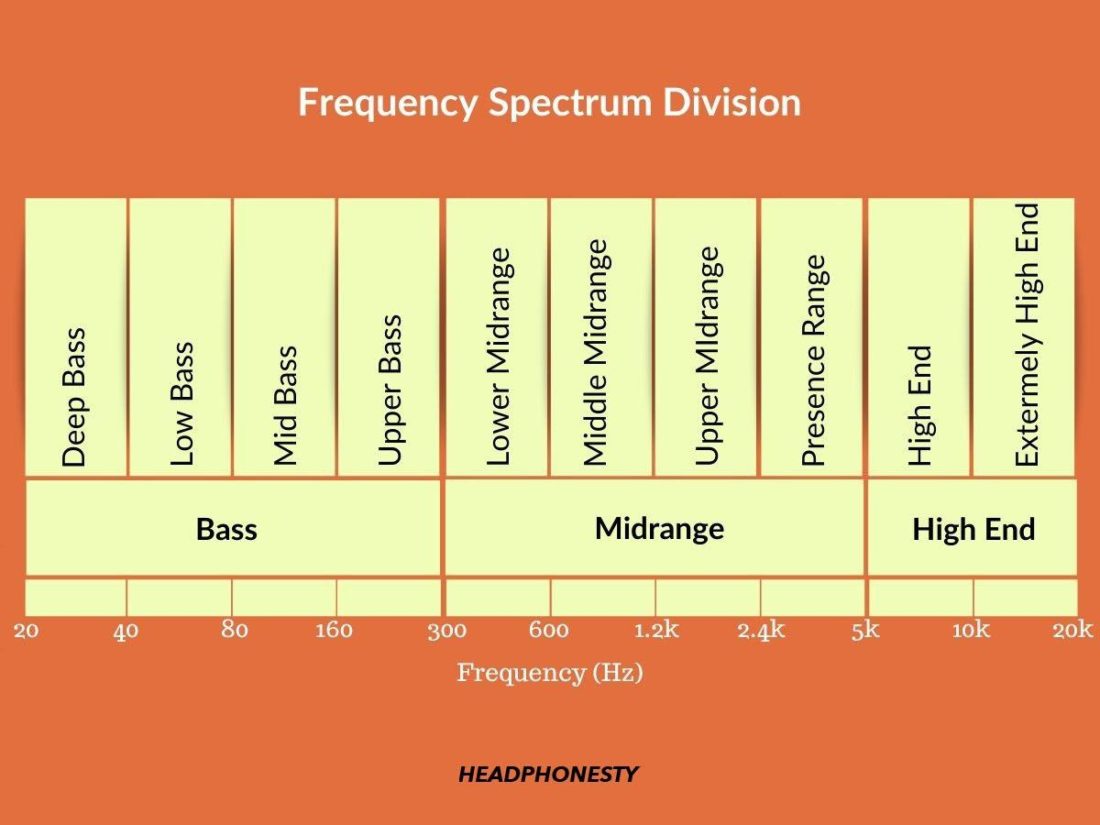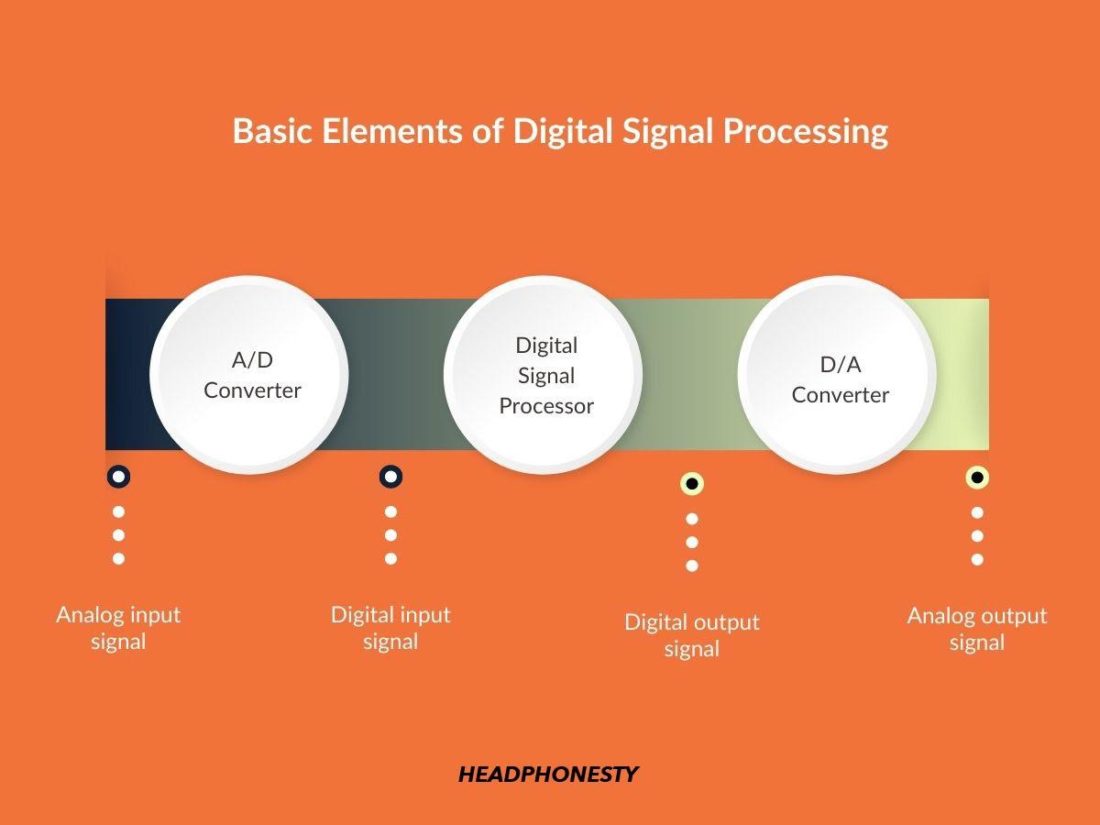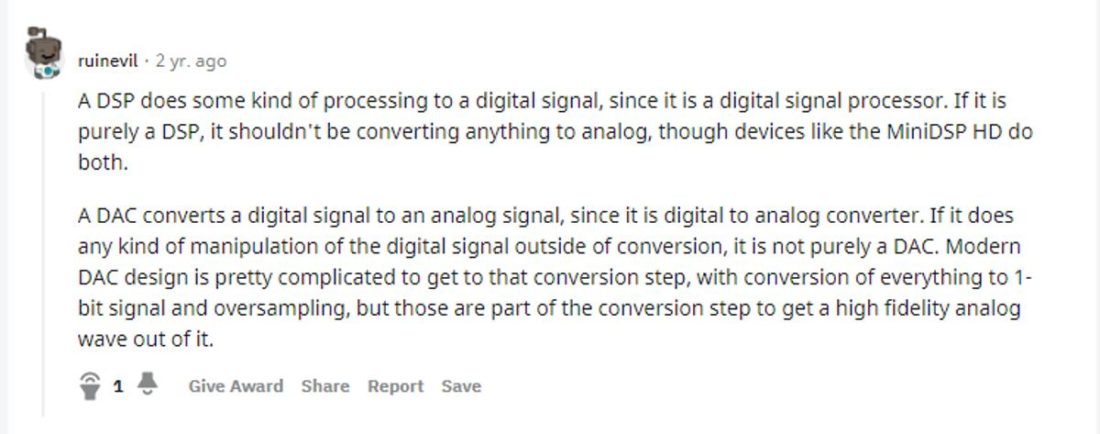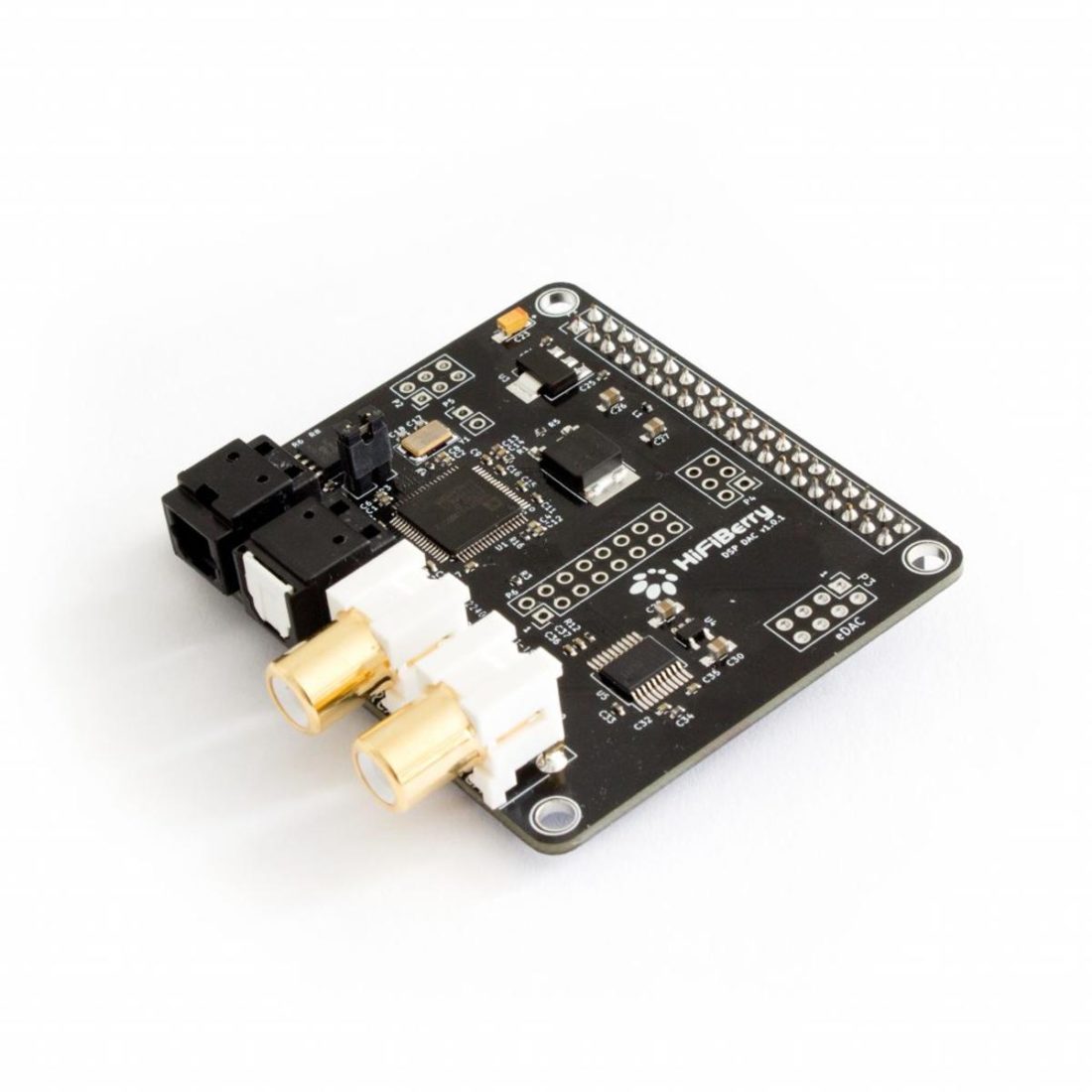But what exactly is DSP? Is it really that important and beneficial to the listening experience? In this article, we’re diving deep into DSP and how it impacts our listening experience.
What Is DSP?
DSP, or “digital signal processing” is the process of taking analog signals from the real world (e.g., voices and images), converting them to digital information, making necessary changes, and then reproducing them into information that we can understand and use. But digital signal processors are computers that don’t understand the analog signals that it receives from inputs like microphones or cameras. They require an analog-to-digital converter (ADC) to translate the input into the binary language that they understand. The digital signal processors can then manipulate the converted signal in many ways to make the end result better for the users. In cameras, the manipulation could be increasing the sharpness, removing motion blur, and many others. However, digital signal processors do all the manipulation in binary – a language that humans don’t generally understand. To make the signal usable to humans, digital signal processors need a digital-to-analog converter (DAC) to translate it to something we understand like images in our monitors or sounds in our speakers. In the audio industry, DSPs can do a lot of things that make our overall experience with audio devices much better. Technological breakthroughs like bass boost, active noise cancellation, adaptive equalizer, and voice typing are all the results of bleeding-edge digital signal processing.
How DSP Affects Audio Quality
There are many ways that DSP helps with audio quality. After all, it is the cornerstone of modern audio devices. Here are five most significant areas that DSP improves when it comes to audio quality:
Improve dynamic and frequency range
In most cases, the dynamic or frequency range of digital signals can exceed that of an analog signal. For example, the average consumer analog cassette tapes have a dynamic range between 50 to 70 dB. When you run that same analog signal through a 16-bit analog-to-digital converter, the dynamic range will increase to 90 to 95 dB. In addition to improving the dynamic range of the audio, DSP also has the ability to improve the frequency range. In other words, you can hear higher highs and lower lows.
Take out unwanted echo
Echo cancellation is one of the main feats that DSPs can take credit for. Through digital signal processing, devices like your phone or laptop can detect a ‘copy’ of the signal it just transmitted as sounds that it receives after a brief period. The digital signal processor will remove that copy from the next signal it sends to the DAC. While the same process is plausible in analog devices, DSP can do it much faster while being more power-efficient – which is desirable for compact devices like IEMs and wireless headphones.
Aid in conversion
When an artist records a sound, they provide analog signals that the microphone picks up. The microphone will deliver that signal to an analog-to-digital converter (ADC). Once it converts the analog signal to digital, it will deliver it to DSP. The DSP will encode and save the output file (e.g., MP3, WAV, FLAC, etc.) to the memory. In an advanced DSP setup, it will also do other manipulations such as noise control, echo cancellation, customized eq, and others. When you playback the recording, the DSP will take the file from the memory, decode it, and deliver it to the digital-to-analog converter (DAC). The DAC will then convert the signal back to analog and relay it to the speakers.
Gain control
You can think of gain control as adjusting your phone’s volume during a call. When your phone’s volume is too low, you won’t be able to hear the person on the other end. Inversely, they’ll sound distorted when you crank up the volume too high. Between the lowest and the highest volume, there’s a sweet spot where you can hear the person’s voice just right, whether they’re speaking normally or screaming their lungs out. Finding that ‘sweet spot’ is one of the main jobs of digital signal processors. DSP determines that ‘sweet spot’ by matching the input’s signal strength to the voltage that the output (speakers or headphones) can handle comfortably without losing volume or distorting. The DSP can take this ever-changing sweet spot and equalize the dynamics in a way that drastically improves the listening experience.
Noise control or ‘Gating’
The electronic components in listening devices regularly alter the voltages throughout the signal processing stage, which results in sound reproduction. However, the unwanted noise you hear, like humming or hissing, are also parts of the signal processing results that you can’t avoid. DSP can set a minimum threshold for the sound frequency that should be passed on to the DAC and speakers. Noises like hissing and humming often have low frequency, which makes it possible for digital signal processors to filter them out.
Automatic audio adjustment
The rapid improvement in digital signal processing also brings tremendous impact to not only audio quality, but the listening experience as a whole. In the past decade or so, the DSP has become the cornerstone of modern audio devices. For example, the AirPods Pro’s Adaptive EQ and Nuraphone’s Personalized Sound feature use the shape of your ear cavities to find the best equalizer settings, which results in a richer and more immersive listening experience for the users.
How DSP Audio Works
Digital signal processors can’t work by themselves. DSP requires the help of both ADC and DAC to translate the signal from analog to digital and vice versa. When you speak or sing into a microphone, your voice is taken in as an analog signal, which is then processed by an analog-to-digital converter (ADC). The ADC turns sounds and voices picked up by the microphone (or other input) into 0’s and 1’s – the binary language that computers such as DSP understand. Once the ADC has successfully converted the signal, it will relay it to the DSP. Upon reaching the DSP, the signal will go through processes like noise reduction, custom equalizer, bass boost, echo cancellation, encoding, and others. There are several key components inside a DSP to do the processes above:
Program Memory: It contains the program/software that the DSP will use to process data. Data Memory: Stores the data that needs to be processed. Compute Engine: Access information from program and data memory and process the signal. Input/Output: What the DSP uses to gather/distribute information from/to the real world.
The most basic form of digital signal processing is noise and echo cancellation. In ANC headphones, the DSP uses the noises picked up by microphones and then fabricates counter-frequencies that will negate them. Digital signal processors also cancel echoes by ‘listening’ for a copy of the signal it just produced. When they notice a copy of a signal, they will remove it and deliver the ‘cleaned-up’ digital signal output to the DAC. The DAC will then convert it into an analog output which can be of use in the real world.
Why Some Audiophiles Dislike DSP Audio
DSP brings a plethora of benefits to the audio listening experience. Still, there are several drawbacks of it that turned away some audiophiles from using devices with digital signal processors.
Sound accuracy issues
A lot of audiophiles are all about purity. However, there is a loss in sound accuracy in the process of analog-to-digital conversion. It takes a complex, colored audio wave and simplifies it to the binary language of 0’s and 1’s, and many audiophiles say they can hear the difference. While digital conversion is technically a rendering of an analog wave in binary, most producers and musicians today don’t lament the pre-digital age. The reality is that the overwhelming majority of audiences wouldn’t be able to hear the difference between analog and digital audio and most producers, musicians and engineers are aware of that reality. The main use of DSP is to adjust the audio to remove any imperfections. For example, if the original recording lacks bass, DSP can do the technological wizardry to add some low end to it. The same premise goes for the vocal, mids, and highs of any song – DSP can just make it relatively ‘better’. However, while no raw song or music recordings are perfect, that’s not entirely bad. In fact, many audiophiles prefer to have idiosyncrasy in their music. The music, distortion, glitches, and the ‘ambiance’ are equally important parts of the sound they want. That’s why, some audiophiles, stay away from DSP to keep their audio tracks authentic and faithful to what’s intended. But then again, not all music listeners want that raw and authentic sound. Millions of non-enthusiasts listeners just want songs that they can enjoy on flights, train rides, and commutes.
DAC vs. DSP
There are some common misconceptions about DAC and DSP. Some people either can’t differentiate the two, while others don’t know whether to go for just a regular DAC or something with built-in DSP. If you’re one of the people who remain confused, worry not. We’ll answer the frequently asked questions for you below:
What are the differences between DAC & DSP?
As the name implies, Digital-to-Analog Converter (DAC) is a device that strictly converts a digital signal into analog output. If it does any type of processing to the signal it receives, it’s not a pure DAC. The explanation above is in sync with what u/ruinevil’s answer on a Reddit thread that asks, “Is there a difference between a DSP & DAC?” What may have confused many people is that DSPs often appear in the same system as both DAC and ADC. The reason for this is that DSPs only deal with binary or digital information – but the world around us is analog. In other words, DSPs require ADC to understand the information and DAC to make the information usable in the real world.
Should you go for DACs with built-in DSP?
The direct answer would be: yes, you should go for DACs with built-in DSP. Having DSP inside your DAC can potentially bring a lot of improvements in your audio quality regardless of what you’re listening to. For example, Hifiberry’s DAC + DSP combines the digital signal processor and analog conversion capabilities without needing two separate devices. But what’s unique about the product is that you’re also given a blank slate. There’s no pre-built software or application in Hifiberry’s DAC + DSP. Given the compact size, there are limitations on what you can achieve. However, a simple room equalization, downsampling, or upsampling shouldn’t be a problem.
Conclusion
A digital signal processor is a technology breakthrough that can make various improvements and alterations to a digital signal quickly and accurately. In audio devices, DSPs can magically improve sound quality without tinkering with voltages as you would with analog equipment. But while there are advantages to having a DSP, there are some debates whether it’s necessarily an improvement for the listening experience in general. After reading through the explanation above, where do you stand on DSPs? Let us know!



